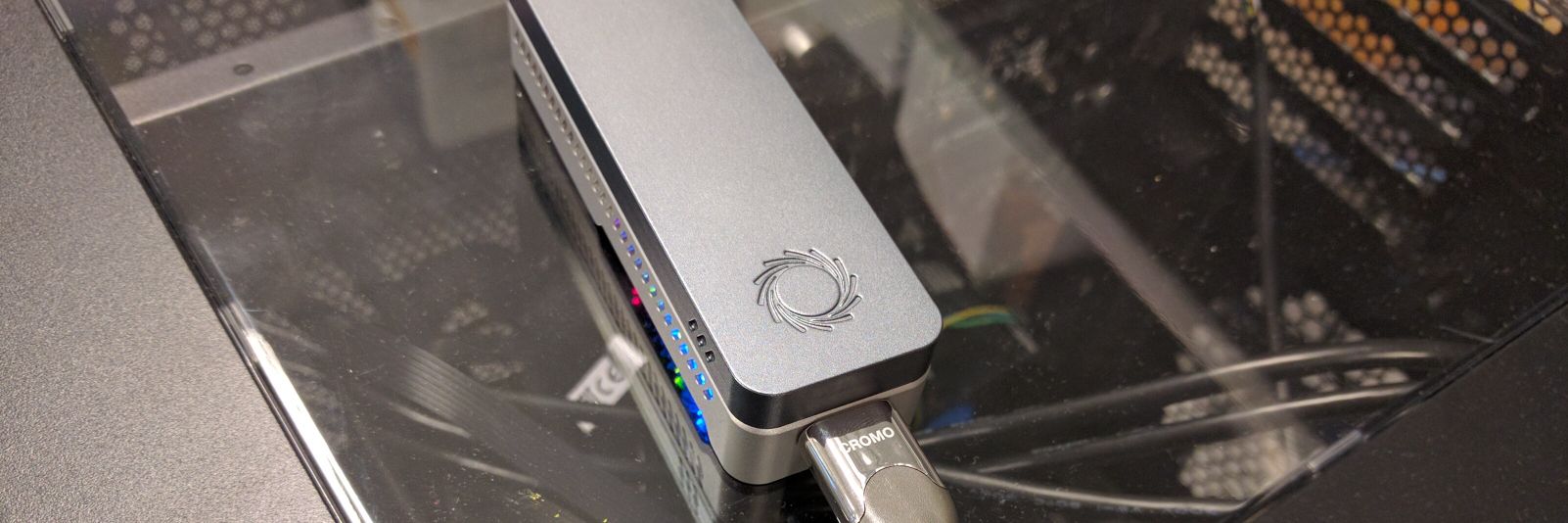
James Ferguson
@Psy_Fer_
Bioinformatician/Genomics Software Engineer @GarvanInstitute, Views my own. Mastodon @[email protected], https://genomic.social/ BS: http://psy-fer.bsky.social
Great way to start the new year, with our platform specific file format for @nanopore signal data, SLOW5. Better compression, faster analysis, easy to use and read, slow5tools for conversion to and from fast5, and a rich API for devs. nature.com/articles/s4158…

We've been developing a small standalone tool for viewing & calculating frequency from modification tags in BAM files. This call is for brave users to test. github.com/warp9seq/minim… written by @sunethsam in C, based on mod tag parsing we did for realfreq doi.org/10.1093/bioinf…
If you are at #ISMB2025: Go to the #BOSC2025 track around 2:30pm ish where @sunethsam will present on real-time @nanopore realtime modification frequency calculation using realfreq [academic.oup.com/bioinformatics…] and standalone frequency calculation using minimod.
New squigualiser-v0.6.4 is out with a new subtool to plot signals (plot_signal) 🚀Just download and execute our standalone binaries (linux/macos). github.com/hiruna72/squig… Below is @nanopore r10 and r9 dna signal-to-reference comparison (check Advanced Examples in repo).
I've always found this frustrating. You or your child has a respiratory infection. It's not flu or COVID. Your doctor can only tell you, 'you have a virus'. Could it be a little bit more specific? We hope to help answer this question, non-invasively, and for free. 1/
blue-crab v0.4.0 released - yet another end_reason added to support pod5 updates. To convert POD5<=>S/BLOW5 simply: pip install blue-crab pod5->blow5 blue-crab p2s example.pod5 -o example.blow5 blow5->pod5 blue-crab s2p example.blow5 -o example.pod5 github.com/Psy-Fer/blue-c…

Check out our detailed evaluation of SLOW5 vs POD5 format for raw Nanopore data. TLDR: SLOW5 still the best nanopore data format.
For many of those who were asking on BLOW5 vs POD5 for nanopore signal data, here is a finally detailed benchmark we did: biorxiv.org/content/10.110… Summary: performance of BLOW5 is >= POD5 (from ~= to 100X, see below), with benefit of having ~3 dependencies instead of >50.
For many of those who were asking on BLOW5 vs POD5 for nanopore signal data, here is a finally detailed benchmark we did: biorxiv.org/content/10.110… Summary: performance of BLOW5 is >= POD5 (from ~= to 100X, see below), with benefit of having ~3 dependencies instead of >50.
Our ex-zd compression is now published in Genome Research. ex-zd lossy mode can reduce 30-40% of the @nanopore signal data size, and the basecalling accuracy scatter is at a similar level to running the original data on two different GPUs - V100 vs A100. genome.cshlp.org/content/35/7/1…
To my genetics/genomics friends in Australia: the @OurDNA_program Symposium will be in Sydney on 14 August, just before @HGSAAustralasia. Learn more about inclusive recruitment for genomics and get a preview of the OurDNA variant browser! events.humanitix.com/ourdna-symposi…
Preprint on "Improving spliced alignment by modeling splice sites with deep learning". It describes minisplice for modeling splice signals. Minimap2 and miniprot now optionally use the predicted scores to improve spliced alignment. arxiv.org/abs/2506.12986
Long reads @nanopore @PacBio can provide insights into epigenetics. We (@fuyilei96 @timp0) summarize the latest #Bioinformatics approaches to analyze methylation & why this matters! Out now @NatureRevGenet bit.ly/4cjxUtl @BCM_HGSC @bcmgenetics @RiceCompSci @JohnsHopkins
Recently, I sat down with Sebastian Cocioba (@ATinyGreenCell) to chat about what real-time science can look like in practice. He spoke about his open lab-notebook, Flowers for Everyone, the necessity of documenting failures, and what it takes to run a one-man CRO today. (1/2)
A new compression strategy to reduce the size of nanopore sequencing data. #DataCompression @nanopore #SequenceData #Bioinformatics #Genomics @genomeresearch genome.cshlp.org/content/early/…
Ira Deveson discusses how they are using Oxford Nanopore sequencing as a single technology to provide genome assemblies to detect complex genomic regions, providing insights into underrepresented populations, rare disease and more. #NanoporeConf
Excited to announce the start of ARTIC2! 🎉 This builds on the success of ARTIC to make sequencing more equitable & accessible. EVE Group at @SwissTPH is a key team member - we'll be making sequences easier to store & share via Loculus & @pathoplexus! birmingham.ac.uk/news/2025/ambi…
Dorado 1.0 🚀release with new RNA modified base models for 2’Ome as well as improvement of all DNA and RNA modified base models including massive improvement in 6mA for open chromatin prediction! Also a lot more non-mods related features😆! #NanoporeConf github.com/nanoporetech/d…